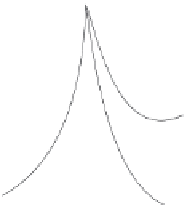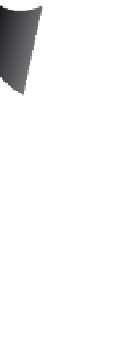Graphics Reference
In-Depth Information
general problem of texture synthesis, although this term also refers to the related
problem replicating texture content to fill holes in images. BTF synthesis is more
difficult, for the reasons noted in the previous paragraph, but some of the ideas
are the same.
9.2.1 Origin of BTF Synthesis
The first practical BTF synthesis method was described in the paper “Synthesizing
Bidirectional Texture Function for Real-World Surface” by Xinguo Liu, Yizhou
Yu, and Heung-Yeung Shum [Liu et al. 01]. The method starts by assuming that
the surface mesostructure of the BTF sample can be approximated by a height
field above a planar reference surface. That is, the surface is represented by a
height function above a reference plane. This approximation is valid if the surface
is such that the line parallel to the reference surface normal hits the mesostructure
surface only once. If the mesostructure has the equivalent of caves or overhangs,
it cannot be represented by a height field. Some real surfaces, such as pile fabrics
(e.g., velvet and shag carpet) cannot be accurately approximated by a height field,
but many surfaces can. The authors represent a height field on a regular grid on
the reference plane, which is coincident with the
xy
-plane, and store the height
z
as a value of the grid cell (
Figure 9.5
).
Recovering the height field from the captured BTF images is one of the biggest
challenges in BTF synthesis. Liu and his colleagues used a technique for deter-
mining
height from shading
[Leclerc and Bobick 91], a variant of the general
shape-from-shading
problem that arises in computer vision. The height from
shading method recovers the height field
z
directly rather than in terms of
surface normals and surface patch coordinates. The method actually computes
(
i
,
j
)
z
(height)
y
x
Figure 9.5
A height field as a surface function.


















